©author(s)
Journal of Migration Affairs
Vol. II(1): 67-90, September 2019
DOI: 10.36931/jma.2019.2.1.67-90
Pdf Issue: an-empirical-analysis-of-occupational.pdf
Introduction
Migration, as an economic process, has been indispensable to the human society. The phenomenon of migration involves various multidimensional aspects; understanding the process of migration therefore requires both macro and micro perspectives. A macro-level analysis involves delineating migration trends and patterns in a geographical space within a given time horizon, and also looking into the broader reasons for migration. On the other hand, a micro-level inquiry entails understanding the migration process in a framework that involves individual and household decisions, which may be backed by both economic and non- economic(cultural and societal) factors. In the context of labour migration, it can be argued that both macro and micro-level understanding is crucial in ascertaining the causes and economic outcomes of migration. In this context, this paper tries to guage the occupational and economic attainments of Bihari migrants across other states in India.
Existing literature suggests that migration mostly occurs from the economically backward to prosperous regions, which implies that regional disparity or uneven economic development is the determining factor behind migration (Ravenstein 1885; McDowell & de Haan 1997). Empirical studies confirm that the leading cause of international migration is mostly related to economic variables, such as economic opportunities and better employment conditions in the country of destination, compared to the source country (Mara & Landesmann 2013). Also, migration for employment can be seen as a strategy by various communities towards improving the economic conditions and livelihood of households compared to the relative deprivation at the origin (Stark & Taylor 1989; Quinn 2006). In the context of India, Roy and Debnath (2011) found a positive association between the level of development and net migration rate. Such an observation was based on a rigorous verification of the influence of a variety of factors that determine the decision to migrate.. After analysing fifteen major Indian states to verify the relationship between the pattern of migration and the economic development of the states, they found that states with a higher per capita income (PCI) were more likely to attract migrants, whereas unemployment at origin is associated with outmigration. Another much recent study shows that there exists a strong correlation (0.82) between state-level wealth (State Domestic Product) and in-migration in India (Castaldo et al. 2012). Overall, it was found that the states offering better job opportunities, such as Delhi, Maharashtra etc., were gaining human capital and backward, poorer states such as Bihar, Uttar Pradesh etc., were losing human capital (Bhagat, 2009; Chandrasekhar & Sharma 2014, Sarkar 2014).
A trend analysis using the unit level National Sample Survey Organisation (NSSO) 64th round data shows that Bihar witnesses the highest level of ‘population adjusted negative net migration’ which is -56 per 1000 population. On the contrary, Delhi witnesses the highest level of ‘population adjusted positive net migration’ which is 239 per 1000 population. Also, while examining the reason for migration in India, it is observed that of all migrants (male and female ), around 30 percent move for employment-related reasons. However, after adjusting for gender differences in the migration pattern, it is observed that among the male migrants, around 78 percent (all-India average) move because of employment-related/economic reasons. A more detailed state-level analysis shows that the intensity of employment-related outmigration for male migrants is very high for Bihar at around 88 percent.
In the light of the above discussed facts, this paper tries to examine the labour migration pattern from Bihar to the major destination states along with the associated economic consequences. The specific objectives of the paper are the following:
First, to analyse the occupational status of the migrants across the states of India, using the criteria of Usual Principal Activity status (UPA) and the National Industrial Classification (NIC) category.
Second, to estimate the determinants of regular salaried/wage occupations for both the male and female migrants separately.
Third, to analyse the economic attainments of the migrants in terms of their distribution in the wealth quintile at the destination, as compared to that of the local people (non-migrant/ native) at the destination states and those in Bihar (non-migrant/native).
Data and Methodology
This study has been carried out using the unit level NSSO 64th round (2007-08) data. The methodology of this paper includes basic statistics such as percentages, probability values (p-values) and the Logistic Regression Model for estimating the determinants of getting engaged in regular salaried/wage occupations. Details of the methodology are as follows:
Distribution of Migrants across Usual Principal Activity Status (UPA) and National Industrial Classification (NIC)
In this section, migrants are categorised according to the Usual Principal Activity status across the states of India. Here, the UPA composition of migrants from Bihar is compared with the UPA composition of other migrants from the rest of the Indian states. The major UPAs considered are as follows:
a. Self-employed (S-Emp): this includes those working in their own household enterprises as account workers and employers. Those working as helpers in their family enterprise, along with unpaid family workers, are also included.
b. Regular salaried/wage employee (RS/W
c. Casual wage labor (CWL) workers
The ‘unemployed’ and the ‘not in labour force’ categories have not been not used in the analysis because the focus of the paper is on those who are engaged in various categories of employment and occupations.
Labour migrants from Bihar are also estimated as per the major NIC classification. The broad NIC classification considered for the analysis includes: Agriculture, Manufacturing, Construction and others (this includes service sector).
Estimation Procedure: Determinants of Regular Salaried/Wage Occupation
The econometric model used in the analysis is the Logistic Regression Model, where the dependent variable is categorical. In this case, it is a binary dependent variable, i.e., it can take two values, ‘0’ and ‘1’, which represent outcomes. Here, ‘1’ represents the likelihood of getting employed in regular salaried/wage occupation (RS/W) and ‘0’ represents otherwise. The analysis is done for migrants who belong to the labour force. Also, to account for gender differentials, a separate regression analysis is done for male and female migrants.
Let x = (x 1 , x 2 ….x n ) be the values of n predictor variables. Let p(x) be the probability of Y = 1 given x. Assuming a linear relationship between the logit and the predictor variables, the logit model is given by
The explanatory variables used in this model are categorical in nature:
A. Age Group: 15 to 24 Years (Reference category), 25 to 39 Years and 40 to 59 Years.
B. Marital Status (Only for female migrants): Never Married, Widowed, Divorced/ Separated, and Currently Married (Reference category).
C. Social Group: Scheduled Tribe (ST), Scheduled Class (SC), Other Backward Class (OBC) and General Category /Non- ST, SC & OBC (Reference Category).
D. Religion: Hinduism, Islam, and Others (Reference Category). Others include Christianity, Sikhism, Buddhism, and Zoroastrianism, etc.
E. Education: Non-literate (Reference category), Edu1- literate without any schooling; literate without formal schooling including literate through Non-Formal Education Courses (NFEC)/Alternative Innovative Education Programme (AIEP), literate through Total Literacy Campaign (TLC)/ Adult Education Centres (AEC) and others; literate with formal schooling including EGS (Education Guarantee Scheme), below primary, primary and upper primary/middle ; Edu2- secondary, higher secondary, diploma/certificate course, and Edu3- Graduate, postgraduate and above.
F. Origin: Urban origin and rural origin (Reference Category).
G. Past Experience (referring to past occupation): Self-employed, Regular salaried/ wage, Casual labour, Unemployed, and Not in labour force (Reference Category).
(The Goodness of Fit for both the models, i.e., male and female, is tested using the Hosmer-Lemeshow test).
Measuring the Economic Attainments of the Bihari Migrants in the Destination States
Here, three of the most favoured destination states, viz. Delhi, Maharashtra and Gujarat, are selected for analysis. In this section, the focus is on viewing economic gains in terms of the economic mobility achieved by the Bihari migrants. The analysis is done by comparing the distribution of the migrants’ cohort in the wealth quintile i.e. Monthly Per Capita Consumption Expenditure (MPCE) at the urban destination compared to that of non-migrants at the origin/ source. The five quintile distributions are Q1 (0 to 20 percent), i.e., lowest 20 percent in the wealth quintile, followed by Q2 (20 to 40 percent), Q3 (40 to 60 percent), Q4 (60 to 80 percent), and Q5 (80 to 100 percent). Unlike the information on UPA status provided by NSSO, for pre and postmigration activity, the information on consumption (i.e., MPCE) does not incorporate premigration consumption status. Given this limitation, a comparison of the MPCE of migrants with the premigration status is not possible. Therefore, here a counterfactual is made where the distribution of migrants in the wealth quintile at the urban destination is compared to the quintile distribution of the non-migrant/natives in the origin state for selected migrant cohorts. This method of comparing the MPCE quintile distribution between migrants and non-migrants is borrowed from Joe et al. (2009; 2011).
Findings and Interpretation of Results
This section discusses the empirical findings of the study in the order of the key research questions. It begins with tables and interpretations of the economic activity/participation in UPA across industries, of the Bihari migrants in all destination states, followed by the econometric model and the economic positioning of Bihari migrants in the three major destination states chosen for the study, viz. Delhi, Maharashtra and Gujarat.
Distribution of Migrants in the Employment Categories based on UPS Criteria
Since the main focus of the study is to analyse the employment distribution of the migrants, those not in the labour force are not considered for the analysis. Here, the purpose is to identify the principal employment category in which Bihari migrants are absorbed in the labour market. The UPA distribution for Bihari migrants is compared to the overall migrant population in India.
Graph-1: Distribution of Migrants across UPA category at All India Level (in percent)
Source: Calculated using unit level 64th round NSSO data on migration.
Graph-1 shows the distribution of migrants working across various UPA categories. Overall it is observed that among economic migrants, i.e., those who are in the labour force, less than 2 percent are unemployed, whereas the remaining 98 percent are engaged in self-employment, regular wage/salaried occupation and casual labour. In the employed category, most of the migrants are in the self-employed and casual labour categories, and less than 30 percent of the migrants are engaged in regular salaried/wage occupations. Overall, the distribution patterns across UPAs of the all-migrants category and the migrants from Bihar are similar; very marginal differences are observed, as reflected in the (difference) section of the graph. Table-1 shows the UPA distribution of all migrants and migrants from Bihar across major Indian states. In this section, the unemployed category is not included, given the fact that the share of the unemployed migrants is very little as seen in Graph-1.
Table-1: Usual Principal Activity Status of Migrants across Indian States
Source: Calculated using unit level 64th round NSSO data on migration.
Note: The aggregate of the three UPA categories adds up to 100.
* NA refers to Not Applicable.
The state-level analysis shows that the distribution of economic migrants in the UPA varies from state to state; this can be attributed to the fact that each and every state varies in terms of economic development, types of employment opportunities and natural resources along with socio-cultural and political differences.
A UPA-category-wise interpretation of data related to states in Table-1 shows that for the all-migrants group, the highest concentration of those in the self-employed category is observed mostly in the lower income and the EAG (Empowered Action group) states, such as Rajasthan (69.43 percent), Jharkhand (66.96 percent) and Uttaranchal (64.98 percent). On the other hand, a lesser dominance of this UPA category is observed in higher-income states such as Punjab (29.73 percent), Delhi (33.21 percent) and Kerala (34.39 percent). In the case of migrants from Bihar, it is observed that the overall engagement in self-employment is relatively less compared to the all-migrants category. A state-wise comparison shows that for Bihari migrants, engagement in self-employment is highest in Chhattisgarh (76.17 percent), followed by Orissa (45.33 percent), Uttar Pradesh (38.14 percent) etc., all of which are EAG states. On the other hand, the lowest dominance is observed in Kerala (0.42 percent), closely followed by Madhya Pradesh (1.74 percent). In the case of regular salaried/wage occupation, for the all-migrant category the highest dominance is observed in Delhi (59.17 percent), followed by Jammu & Kashmir (44.52 percent), whereas the lowest dominance is found in the economically backward and lower-income states such as Bihar (9.42 percent), Madhya Pradesh (10.04 percent), Chhattisgarh (10.23 percent), Jharkhand (11.33 percent) etc. For migrants from Bihar, engagement in the regular salaried/wage occupation is highest in the southern state of Karnataka (88.79 percent), Madhya Pradesh (73.97 percent), Andhra Pradesh (63.73 percent) and Maharashtra (63.17 percent); the concentration is lowest in Kerala (0.58 percent) and Jammu & Kashmir (3.45 percent). In the case of casual labour, for the all-migrant category, the highest dominance is observed in Andhra Pradesh (45.06 percent) followed by Madhya Pradesh (43.01 percent), whereas the lowest dominance is found in Himachal Pradesh (4.32 percent), Uttaranchal (7.51 percent), Delhi (7.62 percent) etc. For migrants from Bihar, the share of casual labour is highest in Jammu & Kashmir (84.02 percent), Uttaranchal (53.30 percent), Rajasthan (45.55 percent) and the bordering state of Jharkhand (43.41 percent), and lowest in Karnataka (1.65 percent) and Maharashtra (5.35 percent).
Table-2 shows the employment status of migrants from Bihar across the common destination states as compared to those in the all-migrants category. Here, the contrast of employment status between these two migrant cohorts is measured calculating the distributional difference between these two groups for each of the UPA categories. It is observed that in almost all the major Indian states, labour migrants from Bihar are less concentrated in self-employment-related occupations compared to the all-migrants cohort. This can be attributed to the fact that they are more concentrated in regular wage/salaried occupations and casual labour. The overall comparison of UPA criteria for those in the all-migrants category and the Bihari migrants shows that Bihari migrants are more concentrated in the regular wage/salaried occupations and casual labour across states, as is evident from the fact that the UPA distributional difference value for Bihari migrants are positive for regular salaried/wage occupations in fifteen out of nineteen major Indian states, and ten out of nineteen states for the casual labour category.
Table-2: Employment Status of Migrants from Bihar across UPA Compared to All Migrants
Source: Calculated using unit level 64th round NSSO data on migration.
Note: Bihar is removed from the table as only the destination states are considered.
Determinants of Regular Salaried/Wage Occupation at the Urban Destination
In the previous section, it was observed that engagement in regular salaried/wage (RS/W) occupations is higher by 5.56 percent for migrants from Bihar compared to the all-migrants category. In this section, an attempt is made to examine further the role of various socioeconomic and personal characteristics, such as age, education, place of origin etc., in determining the share of Bihari migrants in RS/W occupations in India. Here, the Logistic Regression Model is used, as the dependent variable is categorical and can take two values, ‘0’ and ‘1’, in representing outcomes. Here, ‘1’ represents the likelihood of getting employed in regular salaried/wage occupation and ‘0’ represents otherwise. The analysis is done for migrants who belong to the labour force. Also, to account for gender differentials, separate regression analyses are done for male and female migrants.
Estimated Results for Male Migrants
Table-3 shows the logistic regression results for analysing the determinants of RS/W occupation among the Bihari male migrants in India. Both adjusted and unadjusted odds ratios are calculated. The unadjusted odds ratio (UOR) shows the association between the RS/W and each explanatory variable individually. On the other hand, the adjusted odds ratio (AOR) shows the association between the dependent variable and all the explanatory variables included simultaneously in the model. The AOR values show that age is an important factor in determining RS/W occupation among male migrants. Compared to the lower age group (15-24 years), those in the higher age groups (25-39 years and 40-59 years) are less likely to be in RS/W occupation. This can be because of the fact that young migrants are probably more trained and informed about the job market. In the Social Group categories, it is observed that compared to the general category, socially backward categories such as ST, SC & OBC were less likely to engage in RS/W occupations. It is interesting to observe that the UOR for religion is significant only for Hindu migrants. The AOR for religion is insignificant, which means that religion does not play any significant role in determining occupation in the RS/W category. For migrants, education is an important determinant for getting into RS/W occupation. Educated migrants, especially those in the Edu-3 category representing graduate, postgraduate and above levels of educational attainment, are 4.11 times more likely to get into RS/W occupation at their urban destinations in India compared to non-literate migrants. Another important observation is that as per both the UOR and the AOR, urban-origin migrants are more likely to get into RS/W occupations because, as already argued in the previous section, urban-origin migrants are more skilled and well-informed about the destination labour market compared to rural-origin migrants.
Past experience is another important variable playing a significant role in determining RS/W occupation. It is observed that migrants with prior experience in RS/W occupations are 7.5 times more likely to get employed in RS/W occupations. Also, those previously unemployed are 2.34 times more likely to be in RS/W occupation compared to those who were NLF before migration but have entered the labour force after migration.
Table-3: Estimated Results for Male Migrants
Note: ***P<0.01, ** p<0.05
Estimated Results for Female Migrants
Table-4 shows the determinants of RS/W occupation among the female migrants from Bihar in India. The AOR estimates show that compared to the lower age group (15-24 years), those in the higher age groups (25-39 years and 40-59 years) are less likely to be in RS/W occupation. Among the female migrants, single women (never married, widowed and divorced/ separated) are more likely to be employed in RS/W occupation compared to married women. Marriage is one of the widely cited factors discouraging work participation among migrant women. Moreover, single women receive greater positive returns from geographical mobility (Prabha 2011).
In the Social Group categories, female migrants belonging to the SC community are around nine times more likely to be engaged in RS/W occupations compared to general category female migrants. This can be attributed to economic factors: which drive female migrants in this community to be more economically active compared to general category female migrants. In the education categories, it is observed that educated female migrants, especially the Edu-1, Edu-2 and Edu-3, are likely to get into RS/W occupations than the non-literate ones. Variables such as origin and past experience give results comparable to the male migrant cohort.
Overall, comparing the determinants of male and female migrants getting into RS/W occupations, it can be observed that there exist certain similarities and also dissimilarities across the explanatory variables. It is found that for both, male and female migrants, age, education, past experience and origin play a very similar role in their getting into RS/W occupations. On the other hand, it observed that the variable of caste (recorded in the Social Group category) plays a very significant role for female migrants, whereas for male migrants it is not even significant. Another important observation is that for female migrants, the marital status plays a very crucial role in determining their employment status.
Table-4: Estimated Results for Female Migrants
Note: ***P<0.01, ** p<0.05
(The variable religion is not incorporated in the female migration table because of missing values)
Employment Distribution for Migrants from Bihar in Terms of Broad NIC Classification
In this section, an effort has been made to understand the distribution of Bihari migrants across the NIC classification, viz. agriculture, manufacturing, construction and others.
Graph-2: Distribution of Bihari Migrants across NIC at All India Level (in percent)
Source: Calculated using unit level 64th round NSSO data on migration.
Graph-2 shows the distribution of Bihari migrants across various sectors such as agriculture, manufacturing, construction etc. The concentration of Bihari migrants in the industrial sectors is not uniform across the destination states (Table-7). Though the overall all-India level results show higher concentration in other sectors, mostly the service sector, a more disaggregate state-level assessment shows that the concentration of migrants across sectors varies from state to state. This is because of the fact that the economic and geographical characteristics of states differ, resulting in varying levels of employment opportunities.
Table-5: Distribution of Bihari Migrants across NIC and Indian States (in percent)
Source: Calculated using unit level 64th round NSSO data on migration.
Table-5 shows the distribution of migrants engaged under NIC categories. In the Bihari migrant cohort, the concentration of those engaged in the agricultural sector is highest in Kerala (47.38 percent), followed by Punjab (20.60 percent). In the case of the manufacturing sector, it is interesting to observe that the concentration of Bihari migrants is particularly high in states having a higher concentration of industries and manufacturing units. The concentration of Bihari migrants in the manufacturing sector is found to be highest in Gujarat (58.68 percent), Maharashtra (38.39 percent) and Haryana (31.13 percent). These states are higher-income states and have positive avenues for the rise of micro, small and medium (MSME) manufacturing enterprises. This pattern confirms that the workforce participation pattern of Bihari migrants and the type of labour migration to different states varies according to the economic characteristics of the destination states. It is observed that the concentration of Bihari migrant labour in the construction sector is highest in the northern hilly states of Jammu & Kashmir (79.93 percent), Uttaranchal (35.64 percent) etc., where avenues for employment in the manufacturing sector are limited.
Migrants Categorised into Agricultural and Non-agricultural Workers under Broader Occupational Structure
For an overall comparison of the broader employment profile of the all-migrants category in general, and the Bihari migrants in particular, here the UPA categories, viz. self-employment, regular salaried/wage occupation and casual labour are further categorised into agricultural and non-agricultural sectors. The non-agricultural sector includes manufacturing, construction, service sector and others.
Graph-3: Combined Distribution of UPS Category with Agricultural and Non- agricultural Sector (in percent) for All Migrants
Source: Calculated using unit level 64th round NSSO data on migration.
Graph-4: Combined Distribution of UPA Category with Agricultural and Non- agricultural Sector (in percent) for Migrants from Bihar
Source: Calculated using unit level 64th round NSSO data on migration.
A comparison of Graph-3 and Graph-4 shows that around 60 percent of Bihari migrants in the self-employed category are engaged in the non-agricultural sector, whereas less than 40 percent are engaged in the agricultural sector. On the other hand, self-employed migrants in the all-migrants category are more into the agricultural sector. In the RS/W category, both the Bihari migrants and those in the all-migrants category are more likely to be engaged in the non-agricultural sector. However, though the distributive pattern is similar for both groups, the participation in the agricultural sector is around 2 percent higher for the Bihari migrants. In the case of casual jobs, it is observed that the participation rate in agricultural as well as non-agricultural sectors is similar for both, the all-migrants and the migrants from Bihar. Overall it can be argued that migrants in general are more likely to be engaged in the non- agricultural sector (manufacturing, construction, service sectors, overall industrial sector) when it comes to regular salaried/wage occupations. On the other hand, in the case of self- employment and casual jobs, labour force participation is observed in both the agricultural and non-agricultural sectors, though not in exact proportion.
Economic Attainments of Bihari Migrants across Selected States
Migration is credited for contributing to better economic wellbeing for both, the individual migrants and the migrant household, and is seen as a livelihood strategy by many communities (de Haan 1999; Skeldon 2002; McKenzie & Rapoport 2004). Such mobility is also credited for reducing the risk of being unemployed, obtaining liquidity and financial gain in the face of an imperfect factor, credit and insurance market in the backward regions. In this respect, the gains from migration can be gauged by comparing the extent of benefits received at the place of origin (non-migrants) with the realisation of expected benefits by migrating to a particular destination. It is also plausible that despite low expectations of benefits by certain groups of migrants at the destination, an individual could still be better off by migrating since his expected economic gains at the origin are even lower.
Owing to the diversity across India, each state varies from the other in terms of cost of living. Hence, a migrant can move from a poorer state to a richer state and witness an increase in income, yet might not improve his economic condition. The actual gain from mobility, i.e., whether the migrant is able to improve his or her economic condition compared to the people of his or her origin state who did not migrate, depends upon various other factors.
As each state varies from the other in terms of employment potential due to social, cultural and political factors, in this section an attempt is made to analyse the pattern of economic attainment separately for the selected states. The destination states selected for analysis are Maharashtra, Gujarat and Delhi, and the sources state is Bihar. Earlier studies show that the poorer states are more likely to send migrants: for example, Bihar witnessed a huge number of outmigrants moving to the richer states of Maharashtra, Gujarat and Delhi (Rodgers & Rodgers 2011; Rodgers 2012; de Haan 2011). This is also supported by a recent study that suggests that these three destinations attract migrants with varied educational qualifications (Chandrasekhar & Sharma 2014). A possible reason can be that these rich states provide diverse employment avenues to migrants, thus attracting migrants with different levels of education and skills. Here an attempt is made to analyse the economic attainments of migrants belonging to various socioeconomic groups at a disaggregated level. A comparison of migrants (at the destination) belonging to different quintile groups, has been made with non-migrants/ natives at the destination state as well as non-migrants/natives at the source state. The analysis of economic attainment is done by categorising migrants: a) into caste groups: ST&SC and general category, b) by place of origin: rural and urban and c) by educational status: non- literate and literate.
Economic Attainment across Social Groups: SC, ST and General Category
Table-6 shows the economic attainments of Bihari migrants in the three destinations states of Delhi, Maharashtra and Gujarat separately. In the case of migration from Bihar to urban Delhi, the probability of a migrant being in the top quintile group is higher compared to the non-migrants at the origin for both Social Group categories. For Maharashtra, it is observed that the probability of an individual migrant being in the top three quintiles, i.e., Q1, Q2 and Q3, is higher compared to non-migrants at both destination and origin, for both ST&SC and general category migrants. Similarly, in Gujarat, the probability of a migrant being in the top quintile is more than that of non-migrants at the destination as well as the origin. It is observed that across social groups and in all destination states, the probability of belonging to the top- most quintile, Q5, is higher for the general category migrant compared to the ST&SC migrant. The probability of a general category migrant being in the top 20 percent of the wealth quintile, i.e. Q5, is 0.38 in Delhi, 0.40 in Maharashtra and 0.51 in Gujarat. Overall, it is observed that Bihari migrants in Maharashtra and Gujarat have a higher probability of belonging to Q5 compared to non-migrants both at destination and origin. In Delhi, on the other hand, the probability of belonging to Q5 class is lesser than that of non-migrants/natives of Delhi, particularly for general category migrants.
Table-6: Migrants from Bihar to Urban Delhi, Maharashtra and Gujarat by Social Groups
Source: Author’s calculation using unit level NSS 64th round (2007-08)
Economic Attainment based on Place of Origin: Rural and Urban
Given the huge disparity between the rural and urban areas with respect to several indicators relevant to the process of migration, it can be argued that the quality of migration is considerably influenced by the origin of migration. The majority of rural-origin migrants in urban destinations are those who have moved from agricultural to non-agricultural sectors. They mainly comprise casual workers with very little education and skills, who are mostly employed in construction work and low-waged jobs. On the other hand, urban-origin migrants are in general more informed and educated, and prefer to move to the urban areas of rich states to avail better employment opportunities. These two streams of migrants are thus very different in terms of human capital endowments. Table-7 shows the economic attainments of Bihari migrants in the urban destinations of Delhi, Maharashtra and Gujarat. In Delhi, the probability of rural- origin migrants belonging to Q4 and Q5 classes is lower compared to natives/non-migrants at the destination, but higher than non-migrants at the origin. This helps us infer that even though rural-origin migrants have not gained a higher economic mobility compared to the locals/non-migrants at the destination, migration is still a rewarding phenomenon for them as they are more likely to enjoy a higher economic mobility compared to non-migrants at the origin.
Table-7: Migrants from Bihar to Urban Delhi, Maharashtra and Gujarat by Origin
Source: Author’s calculation using unit level NSS 64th round (2007-08)
In Maharashtra, the probability of rural-origin migrants being in Q5 is slightly higher than that of natives/non-migrants at the destination. However, when compared to non-migrants at the origin, the likelihood of an upward economic transition is very high for migrants. In Gujarat, the probability of rural-origin migrants being in Q4 and Q5 are higher compared to non- migrants at both the destination and the origin. It is noteworthy, though, that migrants of urban-origin in all three destination states have a higher probability of being in top quintile classes, i.e., Q4 and Q5, compared to non-migrants at both destination and origin.
Economic Attainment based on Education: Non-literate and Literate
Education plays a significant role in determining the extent of gains from migration. Human capital, which includes better education and skills, has a distinct advantage in the labour markets of the destination cities (Lucas 1997; Lanzona 1998; Agesa 2001; Kochar 2004).
Table-8: Migrants from Bihar to Urban Delhi, Maharashtra and Gujarat by Education
Source: Author’s calculation using unit level NSS 64th round (2007-08)
Table-8 shows that in Delhi, the probability of non-literate Bihari migrants making it to Q4 and Q5 is very little when compared to non-migrants at the destination. However, compared to non-migrants at the origin, the migrants are more likely to be in higher quintile classes. In Maharashtra, it is observed that the probability of non-literate migrants being in Q5 is higher not only compared to non-migrants at the origin but also compared to non-migrants at the destination. In Gujarat, the non-literate Bihari migrants have a high probability (0.78) of being placed in Q3. Here, it is also very interesting to observe that no migrants belong to Q1 class, which shows a very high overall economic transition, especially when compared to non-migrants at the origin whose probability of being in the Q1 class is 0.67. In the case of literate migrants, the probability of being placed in the Q4 and Q5 classes is very high compared to non-migrants at the origin. However, when compared to non-migrants at the destination, the probability of the literate migrant belonging to Q4 and Q5 is high only in Gujarat. Overall, it is observed that literate migrants are more likely to have a higher economic transition compared to non-literate migrants. It is also obvious that literate migrants have a distinct advantage over non-literate ones in terms of achieving higher gains from migration.
Conclusion
While population growth in the country has been consistent, economic development across states and regions has been far from consistent. This unbalanced development has led to a flow of labour migrants from the backward to the economically better-off and higher-income states. Historically, the eastern state of Bihar has always been at the forefront of outmigration; it has emerged as one of the major outmigrating states with the highest population-adjusted negative net migration rate in the country. On the other hand, states such as Maharashtra, Gujarat and Delhi have become the major receiving states, or in other words, gainers of human capital.
In this paper, an assessment is made of labour migrants from Bihar across various occupational criteria: firstly, the Usual Principal Activity status (UPA), such as regular salaried/wage occupation (RS/W), casual labour and self-employed, and secondly, the criteria of the NIC code (National Industrial Classification) such as Agriculture, Manufacturing, Construction etc. It is observed that due to the variations in economic and development characteristics of the destination states, the participation of Bihari migrants across occupations differed from state to state. It is also noted that while in some states the Bihari migrants are concentrated in regular salaries/wage occupations, they are more dominant in casual jobs in other states. Similarly, in states such as Gujarat and Maharashtra, the Bihari migrants are mostly engaged in jobs in the manufacturing sector which can be attributed to the presence of large industries and dense clusters of MSMEs (micro, small and medium enterprises) in these states. In states such as Punjab and Kerala, a good proportion of migrants engage in agriculture.
Since most economic migrants, especially those who migrate for employment-related reasons, prefer to get engaged in RS/W occupations, an attempt is made to estimate the determinants of their getting employed in such occupations. The analysis is done separately for male and female migrants because of the differences in their migrant characteristics. It is found that the younger migrants from Bihar are more likely to get into RS/W occupations; this result is both interesting and unique because of the fact that, at the all-India level, migrants in the higher age groups are seen to be more likely to get RS/W jobs1 . It is found that a higher education level and urban origin play a positive role in getting RS/W occupation. In the case of female migration, apart from other variables, it is observed that single women are more likely to get RS/W jobs compared to married women. For understanding the economic gains achieved by Bihari migrants at the destination states, the MPCE of the migrants is compared to those of the non-migrants across socioeconomic groups. It is found that by and large, migrants are better placed in the wealth quintiles compared to non-migrants at the destination (Delhi, Maharashtra and Gujarat) as well as the origin (Bihar).
After analysing the various facets of the occupational structure of labour migrants from Bihar, it can be suggested that government agencies should bring forth policies that will help potential migrants at the source itself, so that they will be better informed about the destination labour market, rules, regulations and individual rights.
Note
All India level estimations for determinants of RS/W occupation is not included in the paper.
References
Agesa, R. U. (2001). ‘Migration and the urban to rural earnings difference: A sample selection approach’. Economic Development and Cultural Change 49, no.4: 847–865.
Bhagat, R. B. (2009). ‘Internal migration in India: Are the underclass more mobile?’ Paper presented in XXVI IUSSP General Population Conference, Marrakech, Morocco.
Castaldo, A., Deshingkar, P. & McKay, A. (2012). ‘Internal migration, remittances and poverty: Evidence from Ghana and India’. Migrating Out of Poverty Working Paper No.7 . Falmer: University of Sussex.
Census of India. (2011). Migration Tables. New Delhi: Office of the Registrar General of India.
Chandrasekhar, S. & Sharma, A. (2014). ‘Internal migration for education and employment among youth in India’. Working Paper No. 2014-004. Mumbai: Institute of Development Research (IGIDR).
De Haan, A. (1999). ‘Livelihoods and poverty: The role of migration-a critical review of the migration literature’. The Journal of Development Studies 36, no. 2: 1–47.
De Haan A. (2011). ‘Inclusive growth? Labor migration and poverty in India’. The Indian Journal of Labor Economics 54, no.3: 387–409. Kochar, A. (2004). ‘Urban influences on rural schooling in India’. Journal of Development Economics 74, no.1: 113–136.
Lanzona, L. A. (1998). ‘Migration, self-selection and earnings in Philippine rural communities’. Journal of Development Economics 56, no.1: 27–50.
Mara, I. & Landesmann, M. (2013). ‘The steadiness of migration plans and expected length of stay: based on a recent survey of Romanian migrants in Italy’. NORFACE Migration Discussion Paper No. 2013-07. Vienna: The Vienna Institute for International Economic Studies.
McDowell, C. & De Haan, A. (1997). ‘Migration and sustainable livelihoods: A critical review of the literature’. IDS Working Paper No. 65. Sussex: Institute of Development Studies.
Mckenzie. D. & Rapoport, H. (2004). ‘Network effects and the dynamics of migration and inequality: Theory and evidence from Mexico’. Center for International Development Working Paper No. 201. Stanford, CA: Center for International Development.
National Sample Survey Organization (NSSO) (2010). ‘Migration in India 2007-08’ NSS 64th Round No. 533. New Delhi: Ministry of Statistics and Programme Implementation.
Prabha, R. G. (2011). ‘Migration and female employment in India: Macro evidence from NSSO Data’. In Migration, identity and conflict: India Migration Report, edited by S.I. New Delhi: Routledge.
Quinn, M. A. (2006). ‘Relative deprivation, Wage differentials and mexican migration’. Review of Development Economics 10, no.1: 135–153.
Ravenstein, E. G. (1885). ‘The laws of migration’. Journal of the Statistical Society of London 48, no.2: 167–235.
Rodgers, G. & Rodgers, J. (2011). ‘Inclusive development? Migration, governance and social change in rural Bihar’. Economic and Political Weekly 46, no.23: 43–50.
Rodgers, J. (2012). ‘Labor force participation in Rural Bihar: A thirty-year perspective based on village surveys’. IHD Working Paper No. 04/2012. New Delhi: Institute of Human Development.
Roy, N. & Debnath, A. (2011). ‘Impact of migration on economic development: A study of some selected state’. International Proceedings of Economics Development & Research (IPEDR) 5, no.1: 198–202.
Sarkar, P. (2014). ‘An analysis of inter-state quantum migration in India: An empirical validation of the ‘push-pull framework’ and gains from migration’. Indian Journal of Labor Economics 57. no. 3: 267-281.
Skeldon, R. (2002). ‘Migration and poverty’. Asia Pacific Population Journal 17, no.4: 67–82
Stark, O. & Taylor, J. E. (1989). ‘Relative deprivation and international migration’. Demography 26, no.1: 1–14.


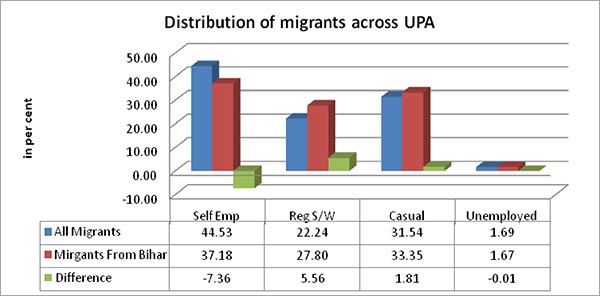
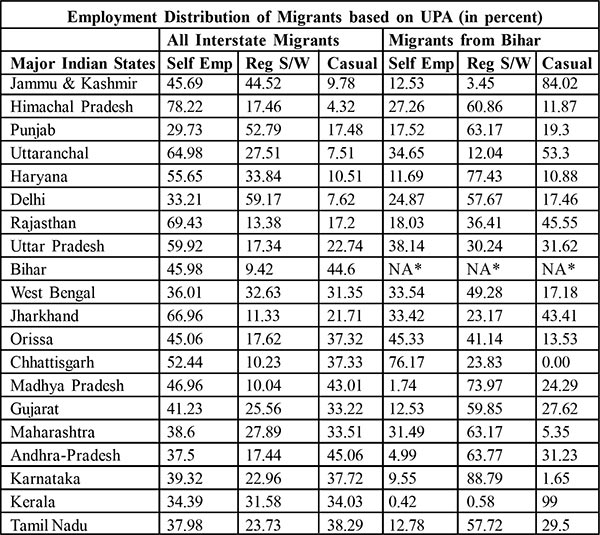
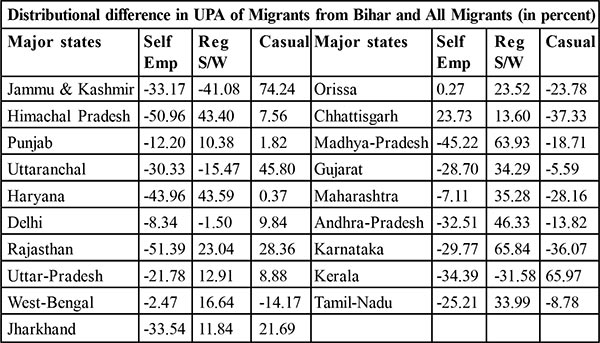
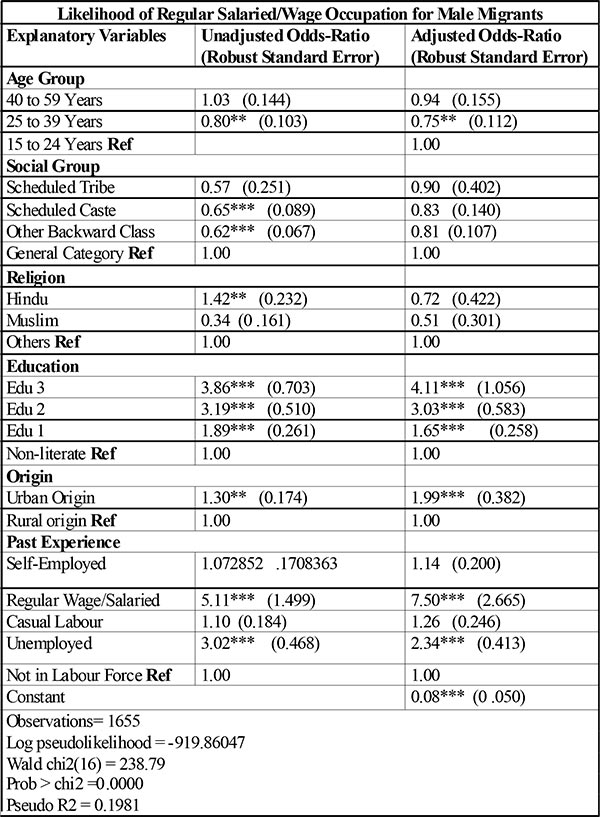
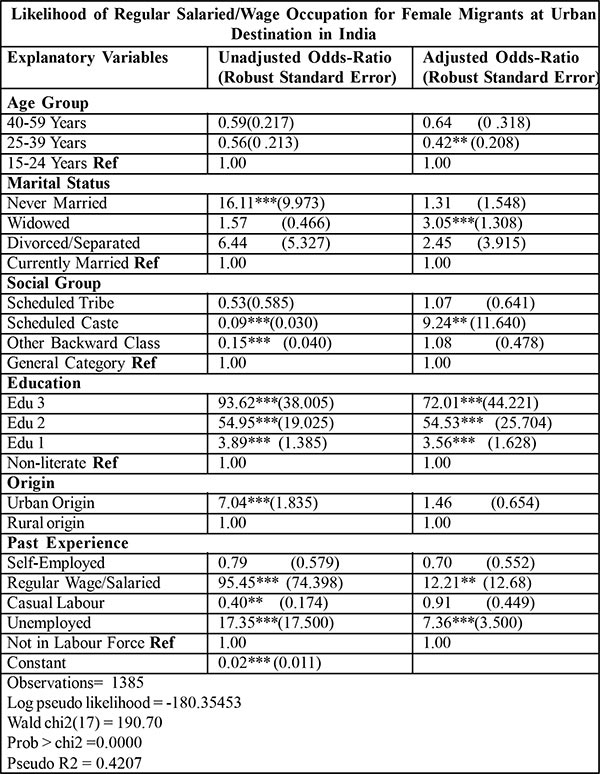
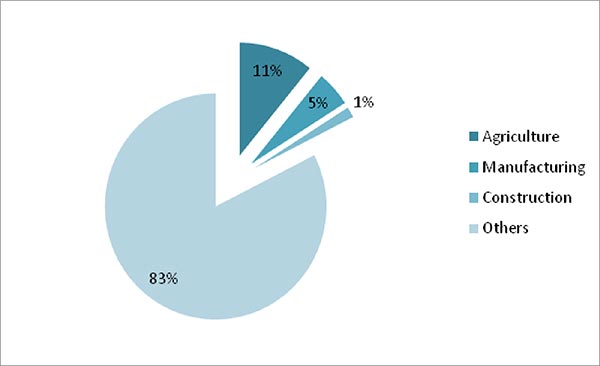
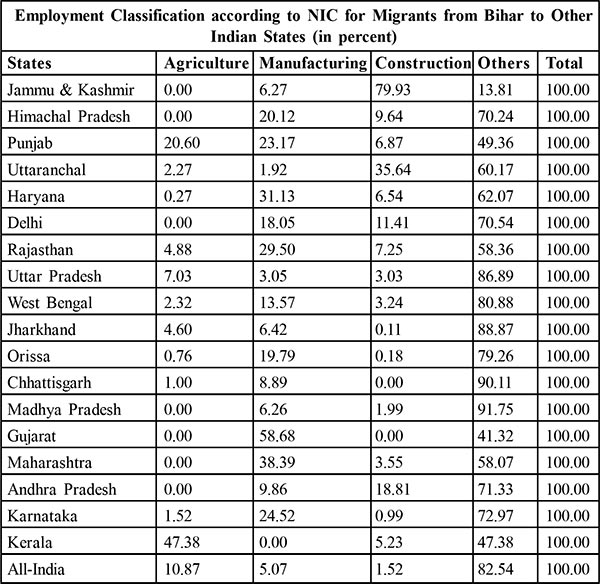
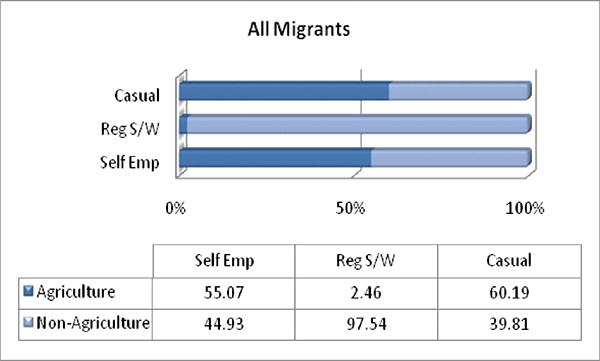
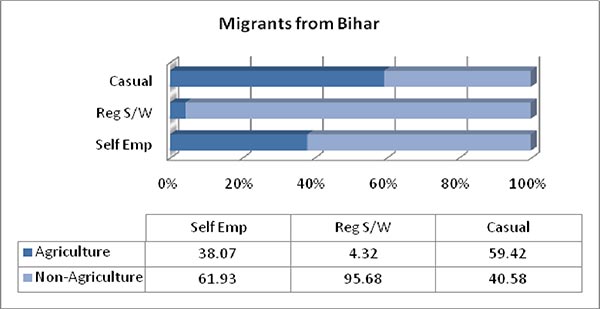
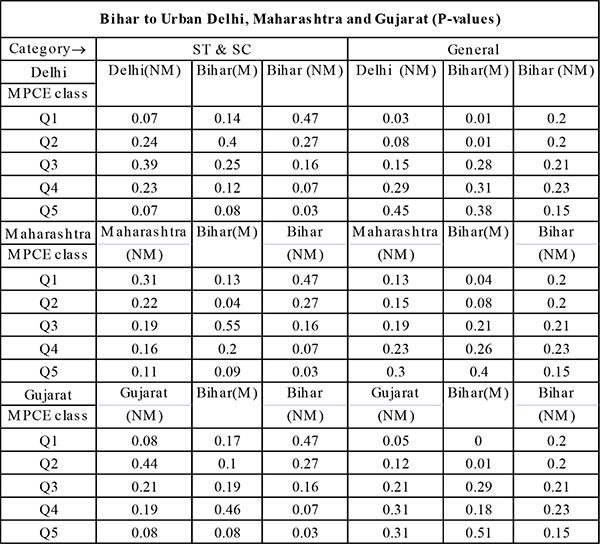
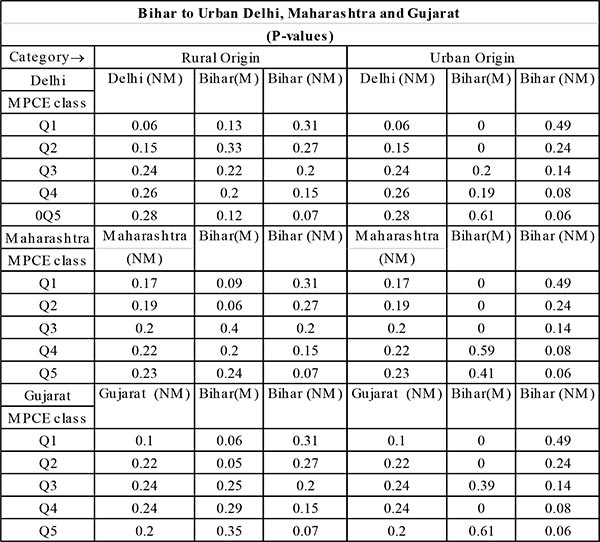
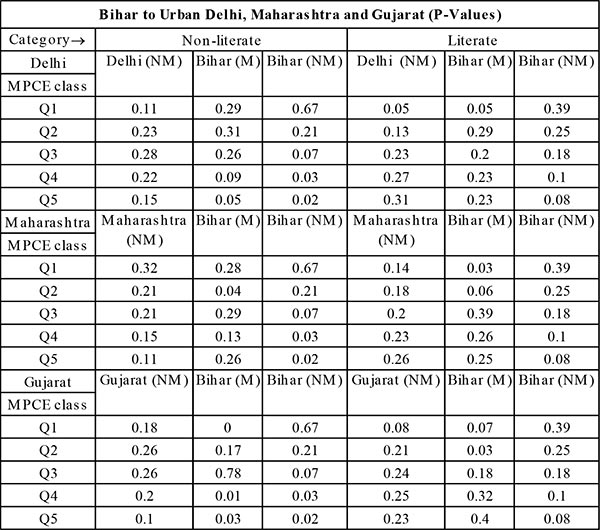

Leave a Comment
Comments are moderated and will be published only if found appropriate. Comments may take some time to appear.
Your email address will not be published. Required fields are marked with *